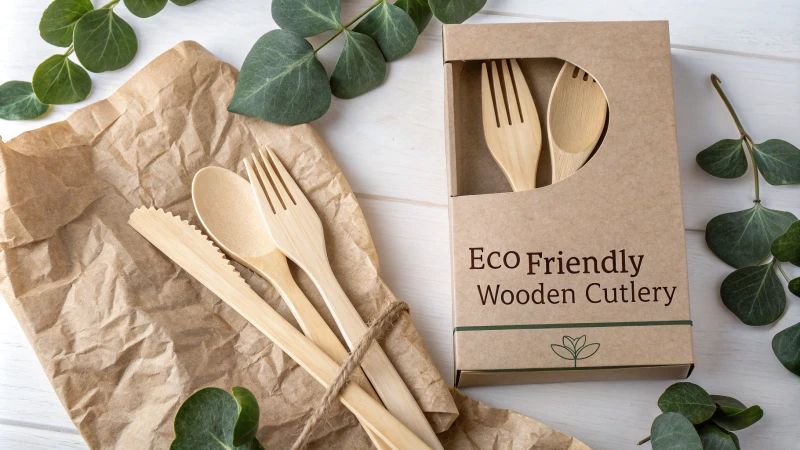
Imagine unwrapping a product that not only meets your needs but also makes you feel like you're doing something good for the planet.
To make disposable wooden cutlery packaging more appealing to eco-friendly consumers, I focus on sustainable materials, minimalist designs, and clear communication of environmental benefits. By aligning packaging with eco-conscious values, I can attract and retain environmentally-minded customers.
Whenever I think about packaging, I remember the time I received a beautifully wrapped gift that instantly sparked joy. It's moments like these that remind me how powerful packaging can be. Just like that gift, the key to captivating eco-conscious consumers lies in understanding their values and reflecting them through design and messaging.
Imagine crafting a narrative through your packaging—one that tells a story of sustainability and care. By choosing biodegradable inks or recycled materials, and perhaps adding a touch of nature-inspired aesthetics, we’re not just selling cutlery; we’re inviting consumers to join a movement towards a greener future. This approach not only enhances the product's visual appeal but also strengthens the emotional connection with customers who value sustainability.
Using recycled materials boosts appeal to eco-friendly consumers.True
Recycled materials align with eco-conscious values, enhancing appeal.
Minimalist designs are less attractive to eco-conscious buyers.False
Minimalist designs reduce waste and highlight sustainability, attracting buyers.
What Design Elements Make Products Eco-Friendly?
Have you ever wondered what makes a product truly eco-friendly and irresistible to those who care about the planet?
Enhancing the eco-friendly appeal of a product involves integrating sustainable materials, minimalist design, and earthy color palettes. These elements not only signify a commitment to environmental responsibility but also attract consumers eager to adopt sustainable lifestyles.
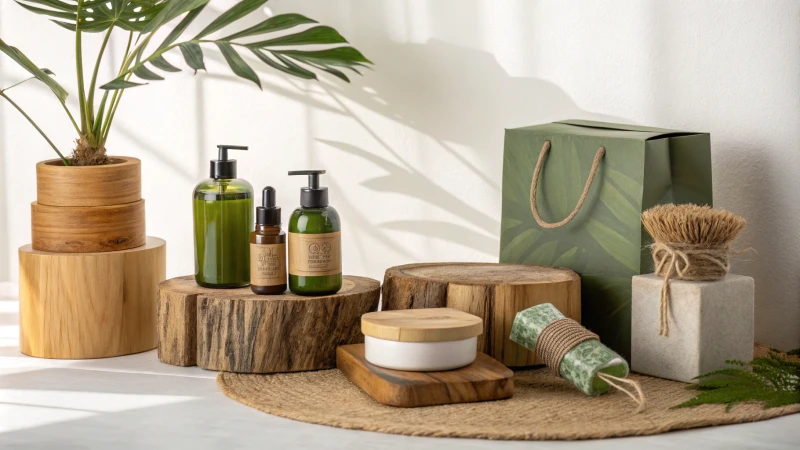
Sustainable Materials: The Foundation of Eco-Design
Let me tell you a little story about how I became obsessed with sustainable materials. It all started during a visit to a local market where I stumbled upon some beautifully crafted bamboo utensils. The vendor passionately explained how using bamboo, which grows incredibly fast, helps reduce environmental impact. That day sparked my journey into sustainable design. By choosing renewable or recycled materials, like bamboo or even recycled plastics, we make a real difference for the planet.
Using sustainable materials is crucial. Designers should opt for renewable or recycled materials, such as bamboo or recycled plastics, to reduce environmental impact. Consumers are increasingly favoring products that visibly demonstrate their commitment to environmental conservation1.
Minimalism in Design: Less is More
I remember when I first embraced minimalism in my life. After clearing out my cluttered workspace, I found a new sense of clarity and focus. The same principle applies to design. Minimalist designs require fewer resources and align perfectly with eco-friendly values while enhancing a product's aesthetic appeal. Imagine walking into a room and feeling that serene simplicity—a clear reflection of contemporary elegance and sustainability.
Minimalist designs, which emphasize simplicity and functionality, often require fewer resources to produce. This approach not only aligns with eco-friendly values but also enhances aesthetic appeal. A streamlined design conveys a sense of contemporary elegance2 and sustainability.
Earthy Color Palettes: Nature's Hues
There’s something undeniably calming about the earthy tones of nature. Growing up, I often spent summers by the sea, surrounded by the rich greens of coastal forests and the tranquil blues of the ocean. Those experiences taught me the power of color in conveying tranquility and consciousness. By incorporating greens, browns, and blues into designs, brands can subtly communicate their green ethos to consumers.
Earth tones like greens, browns, and blues are synonymous with nature and sustainability. These colors can evoke feelings of tranquility and environmental consciousness. When integrated into product design, they subtly communicate a brand's green ethos.
Biodegradable Packaging: Breaking Down Barriers
I remember unboxing a beautifully packaged gift only to feel guilty about the waste it created. That's when I realized how essential eco-friendly packaging is. Using materials like compostable cardboard or plant-based plastics ensures the packaging is as responsible as the product itself.
Eco-friendly packaging plays a pivotal role in enhancing a product's sustainable appeal. Materials like compostable cardboard or plant-based plastics ensure that the packaging is as environmentally responsible as the product itself.
| Feature | Benefits |
|---|---|
| Sustainable Materials | Renewable resources reduce carbon footprint |
| Minimalist Design | Requires fewer resources, amplifying eco-appeal |
| Earthy Palettes | Connects product to nature's aesthetics |
| Biodegradable Packaging | Complements product's eco-friendly ethos |
Communicating Environmental Responsibility
It’s one thing to be eco-friendly; it's another to communicate it effectively. Brands can use clear labeling, certifications, and sustainability messages to enhance consumer trust. When I see a product that wears its environmental credentials proudly, I'm more inclined to choose it over others.
Brands should use design elements to effectively communicate their environmental initiatives. Clear labeling, certifications, and sustainability messages can enhance consumer trust and attract eco-conscious buyers.
By integrating these strategies, companies can elevate their brand image3 while supporting sustainable practices.
Sustainable materials reduce environmental impact.True
Using renewable or recycled materials minimizes ecological footprint.
Minimalist designs require more resources to produce.False
Minimalism uses fewer resources, aligning with eco-friendly values.
Why does material choice matter so much for sustainable packaging?
Ever wondered how the stuff we wrap our goodies in could change the world for the better?
Choosing the right materials for sustainable packaging is essential because it directly impacts environmental sustainability, waste management, and adherence to regulations. Using biodegradable or recyclable options reduces pollution and aligns with eco-friendly goals, making it crucial for environmentally responsible practices.
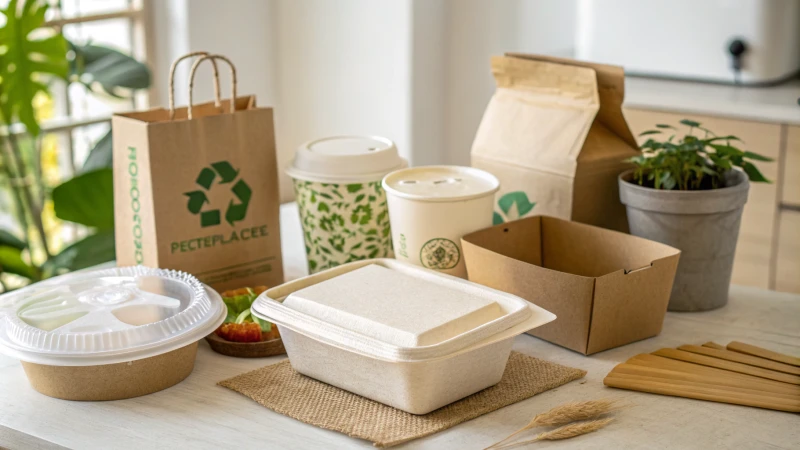
Environmental Impact
I remember when I first learned about how long it takes plastic to decompose—it hit me like a ton of bricks. Imagine a single-use item sticking around for hundreds of years! That's why picking biodegradable materials, like paper or corn starch, is such a game-changer. They break down much quicker, helping us cut down on landfill waste and shrink our carbon footprint. Choosing the right materials isn't just a smart move; it's a responsibility we have towards our planet.
Incorporating biodegradable options4 into packaging solutions helps in minimizing pollution.
Waste Management
The thrill of seeing something as simple as a glass jar being reused over and over is unmatched. It’s like giving old things a new lease on life! Recyclable materials play a big role here, as they help conserve resources and energy. By picking materials that fit within our current recycling systems, we not only manage waste better but also take a step closer to a sustainable future.
| Material | Biodegradability | Recyclability |
|---|---|---|
| Glass | No | Yes |
| Corn Starch | Yes | No |
| Traditional Plastic | No | Yes |
Regulatory Compliance
Navigating the maze of environmental regulations can be tricky, but it's vital for staying in the game. I’ve seen businesses transform their practices to align with new laws, like the EU's Green Deal regulations5. Being proactive about using compliant materials not only avoids penalties but also enhances a brand's eco-friendly image. It’s about standing tall as responsible citizens and business leaders.
Businesses must stay informed about these regulations and proactively choose materials that comply, thereby ensuring their products meet international standards.
Consumer Appeal
The modern consumer is a savvy one, keenly aware of their environmental footprint. I’ve noticed how packaging choices can sway purchasing decisions—people genuinely care about sustainability. By opting for eco-friendly materials like bamboo or recycled paper, brands can resonate with these values. It’s not just about meeting expectations; it’s about exceeding them and creating lasting impressions.
Utilizing materials like bamboo or recycled paper can convey a message of green living6, aligning with consumer values and preferences.
By weaving these insights into packaging strategies, we not only adhere to regulations but also tap into the hearts of eco-conscious consumers, gaining an edge in the marketplace.
Biodegradable materials reduce landfill waste.True
Biodegradable materials break down naturally, reducing landfill accumulation.
Traditional plastics decompose in 50 years.False
Traditional plastics can take hundreds of years to decompose.
How Can You Communicate Sustainability Effectively on Packaging?
Ever stared at a package and wondered if it's truly sustainable? I sure have. Making sure that eco-friendly message pops is crucial, but how exactly do we pull it off?
To communicate sustainability effectively on packaging, focus on clear labeling, use eco-friendly materials, and incorporate engaging design elements. Highlight certifications and sustainable benefits prominently to educate and attract eco-conscious consumers.
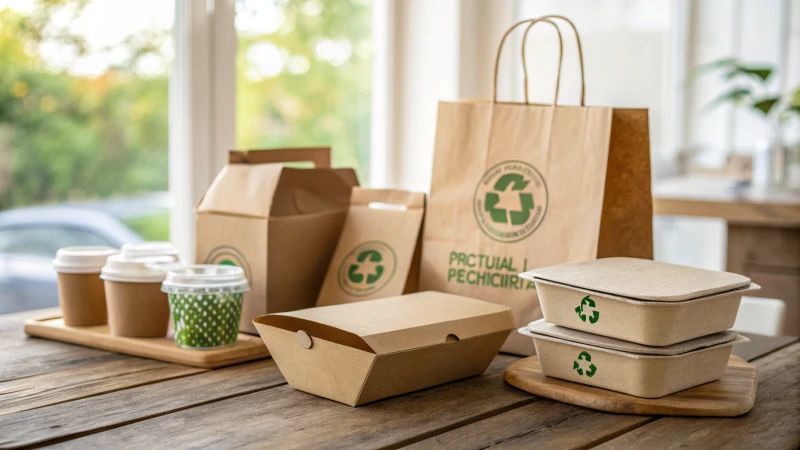
Understanding Consumer Motivation
I've noticed more and more people, myself included, care about what their purchases do to the planet. It's like everyone has this inner environmentalist that just won't stay silent. This shift in consumer mindset gives us a golden opportunity to craft packaging that speaks directly to these concerns. By opting for eco-friendly materials7, like recycled paper or biodegradable plastics, we're not just making a statement; we're also showing we care.
Clear Labeling and Messaging
I remember once being in a store, squinting at a label trying to decipher if the product was recyclable. It shouldn't be this hard! That's why clear labeling is non-negotiable. Using icons or concise text like "100% Recyclable" ensures our message is seen and understood at a glance. Throw in a QR code8 that takes customers on a deeper dive into our sustainability efforts, and we've got a recipe for engaging the tech-savvy shopper.
Incorporating Design Elements
Design is everything when it comes to first impressions. Think about it—earthy colors like greens and browns instantly whisper "nature." A minimalist design? It shouts "less waste, more impact!" These choices not only make our packaging look good but also align perfectly with our sustainability9 goals.
| Element | Sustainable Feature |
|---|---|
| Material | Biodegradable, Recyclable |
| Colors | Earthy tones |
| Design | Minimalistic, Clean |
| Labels | Eco-certifications |
Highlighting Certifications and Benefits
Nothing screams "trust us" like a certification from a well-known environmental organization. These endorsements are like little stamps of approval that make consumers feel good about their choices. Plus, when we outline how choosing sustainable options reduces carbon footprints or supports local ecosystems, we're giving consumers even more reasons to feel great about their purchases.
Engaging Through Storytelling
Every package tells a story, so why not make it an inspiring one? I love sharing our journey towards sustainability right on the packaging. Whether it's a tale of how our products help protect the environment or highlight community initiatives we support, storytelling transforms packaging into a conversation starter.
Utilizing Technology
Imagine pointing your phone at a product and having an interactive experience unfold before your eyes. Augmented reality (AR) apps can do just that—bringing our sustainability message to life in vivid detail. It's not just informative; it's an unforgettable way to engage consumers.
Continuous Feedback Loop
Finally, let's keep the dialogue open. I encourage feedback from customers through social media or surveys. This isn't just about gathering praise; it's about learning how our messages are received and finding areas for improvement. After all, staying aligned with consumer expectations is an ongoing journey.
Eco-friendly materials always cost more than traditional materials.False
While often true, costs vary; some eco-materials are competitive or cheaper.
QR codes can engage tech-savvy consumers with sustainability info.True
QR codes provide easy access to detailed sustainability information online.
What are the latest trends in eco-friendly packaging design?
Imagine a world where every package you touch tells a story of sustainability and care.
The latest trends in eco-friendly packaging design highlight sustainable materials, creative design techniques, and active consumer participation. Innovations like biodegradable plastics, minimalist designs, and interactive elements are paving the way for more environmentally responsible packaging solutions.
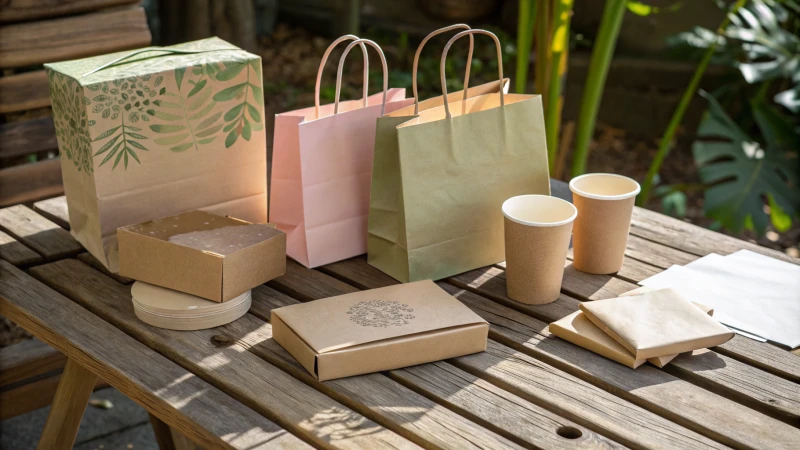
Sustainable Material Innovations
Let me tell you about a recent experience I had when exploring biodegradable plastics10. It was like discovering a secret garden of innovation! These materials, crafted from corn or sugarcane, felt like little heroes ready to save our planet. They decompose naturally over time, reducing the environmental footprint one package at a time. It's fascinating how plant-based packaging11 is not just a buzzword but a tangible reality reshaping our approach to sustainability.
Minimalist and Functional Designs
I remember the first time I unwrapped a product with minimalist packaging. It was like finding an unexpected treasure — simple yet profound. The clear design spoke volumes about the brand's commitment to sustainability, using just what was necessary and nothing more. Monochromatic schemes and simple fonts are more than aesthetic choices; they symbolize clarity and purpose, making us feel part of a bigger mission to reduce waste.
Interactive and Engaging Packaging
Have you ever scanned a QR code on a package and been transported into a world of information? I have, and it's thrilling! These interactive features aren't just gimmicks; they're gateways to understanding the sustainable journey of products we consume. Through augmented reality or simple digital interactions, packaging becomes a storyteller, educating us about environmental impacts in ways that truly resonate.
| Trend | Description | Benefits |
|---|---|---|
| Biodegradable Plastics | Derived from organic materials | Reduces landfill waste |
| Minimalist Design | Focuses on simplicity | Lowers material use |
| Interactive Features | Uses digital technology | Enhances consumer engagement |
Customization for Brand Image
Customizing packaging feels like choosing an outfit that perfectly reflects who you are. When I worked on aligning packaging with brand identity, selecting eco-friendly inks and recyclable labels was a journey of self-expression — for both the brand and its consumers. This personalization not only reinforces brand values but also attracts environmentally-conscious customers who see through the facade to the genuine commitment beneath.
Embracing these trends is more than just keeping up with consumer culture; it's about leading a movement towards a sustainable future. Each step in innovating packaging solutions12 brings us closer to a world where our choices align with our values, urging us to continually strive for better solutions.
Biodegradable plastics reduce landfill waste significantly.True
Biodegradable plastics break down naturally, reducing landfill waste.
Minimalist packaging designs increase material usage.False
Minimalist designs reduce material usage by eliminating excess elements.
Conclusion
Enhancing disposable wooden cutlery packaging for eco-friendly consumers involves using sustainable materials, minimalist designs, earthy colors, and clear messaging to communicate environmental benefits effectively.
-
Explore how brands integrate sustainable materials into their designs to boost eco-appeal. ↩
-
Learn how minimalist design reduces resource use and enhances sustainability. ↩
-
Discover strategies for conveying eco-friendliness through brand messaging. ↩
-
Explore options that naturally decompose, reducing environmental impact significantly. ↩
-
Understand the sustainability standards set by the EU to ensure compliance. ↩
-
Learn how eco-friendly packaging boosts brand appeal among environmentally conscious consumers. ↩
-
Learn about innovative materials that reduce environmental impact and align with eco-friendly branding. ↩
-
Discover how QR codes can enhance packaging by linking consumers to detailed sustainability information. ↩
-
Explore design strategies that effectively communicate eco-friendly values through aesthetics. ↩
-
Explore how biodegradable plastics can reduce waste and contribute to sustainable packaging solutions. ↩
-
Discover how plant-based materials provide renewable options for eco-friendly packaging. ↩
-
See how personalized sustainable packaging can reflect brand values and attract consumers. ↩

